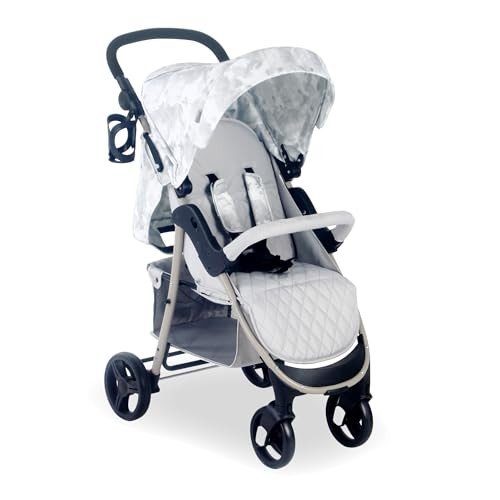Pram or Pushchair: A Comprehensive Guide for New Parents
Choosing the right mode of transportation for children is among the very first substantial choices new moms and dads face. With many choices on the market, the argument between prams and pushchairs can be overwelming. This article will provide detailed insights into the distinctions in between prams and pushchairs, their specs, advantages and drawbacks, and what to think about before making a purchase.
Comprehending Prams and Pushchairs
At its core, the choice in between a pram and a pushchair depends on their style and meant usage.
Definitions:
- Pram: A pram, brief for "perambulator," is designed mostly for newborns. It includes a flat, carrycot-style seat that enables the baby to lie down entirely flat. Prams are frequently more glamorous and are planned for transporting infants who are not yet staying up individually.
- Pushchair: A pushchair, likewise known as a stroller, is designed for older infants and young children who can sit up. Pushchairs usually have an upright seat and might not recline entirely flat, although many designs now provide adjustable reclining alternatives for comfort.
Secret Differences:
| Feature | Pram | Pushchair |
|---|---|---|
| Age of Use | Newborn to about 6 months | 6 months to 4 years or more |
| Seating Position | Flat, resting | Upright or somewhat reclined |
| Weight | Typically much heavier | Typically lighter |
| Mobility | Less portable due to weight | More portable and much easier to fold |
| Usage Case | Brief strolls, leisurely strolls | Daily usage, errands, longer getaways |
Advantages and Disadvantages
Pram
Advantages:
- Comfort for Newborns: Provides a flat surface favorable to a newborn's developmental requirements.
- Stylish Designs: Many prams featured sophisticated designs, using a touch of luxury.
- Storage Space: Sometimes consist of bigger storage alternatives listed below.
Drawbacks:
- Weight: Generally much heavier and bulkier than pushchairs.
- Restricted Usage: Suitable only for newborns and babies who can not stay up.
Pushchair
Benefits:
- Versatility: Suitable for older babies and young children, frequently accommodating them for numerous years.
- Lightweight and Portable: Easier to fold and carry, making them ideal for hectic parents.
- Configurable Options: Many pushchairs have adjustable seats and attachments for safety seat and carrycots.
Drawbacks:
- Comfort for Newborns: Not always suitable for infants in the early months without a correct insert.
- Less Luxurious: Often viewed as less elegant compared to prams.
Making the Right Choice
When it comes to deciding between a pram and pushchair, a number of aspects should be considered:
1. Way of life:
- If parents often make long journeys or opt for walks, a pram may be preferential.
- If they require to browse through city streets or take public transportation, a lightweight pushchair might be more appropriate.
2. Budget plan:
Pricing can vary commonly. Comprehending our homepage will help concentrate on choices that fulfill both aesthetic and practical criteria.
3. Adaptability:
Some progressive services include travel systems that enable parents to shift from a vehicle seat to a pushchair with the same base, using maximum flexibility.
4. Storage Space:
A pram might use up more space in an automobile or in your home, while a pushchair's ability to fold down can be a considerable benefit in tighter areas.
FAQs
Q1: Can I utilize a pushchair for newborns?
A1: Some pushchairs feature bassinet accessories or completely reclining seats, making them appropriate for newborns. However, it's necessary to check the specs before usage.
Q2: How do I pick the ideal design?
A2: Consider your way of life, budget plan, and the functions you prioritize, such as weight, portability, and storage choices.
Q3: Are prams and pushchairs safe for my baby?
A3: Yes, both prams and pushchairs are designed with safety functions. Try to find designs with a 5-point harness, tough brakes, and safe frames.
Q4: How long can I use a pram for?
A4: A pram is generally appropriate till a baby can stay up unassisted, generally around 6 months.
Q5: What are travel systems?
A5: Travel systems are mixes of a car seat and a pushchair that work in tandem, enabling easy transitions from car to pushchair without needing to eliminate the baby.
Picking between a pram and a pushchair eventually boils down to the needs and lifestyle choices of each family. Prams offer convenience and style for infants, while pushchairs provide flexibility and ease for older babies and toddlers. By carefully thinking about individual circumstances and requirements, moms and dads can make an educated option that will ensure safe and satisfying getaways with their little ones.
In the end, whether one go with a stylish pram or a practical pushchair, the primary aim remains the very same-- making sure convenience and safety for the kid while facilitating convenience for moms and dads.

